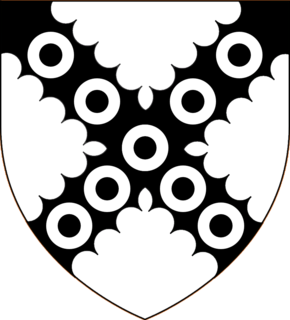There have been two baronetcies created for members of the Leke family, both in the baronetage of England.
Contents
The baronetcy of Leke of Sutton was created on 22 May 1611 for Francis Leke, of Sutton, Nottinghamshire who was later advanced as Baron Deincourt in 1628 and Earl of Scarsdale in 1645. [1]
Baron is a rank of nobility or title of honour, often hereditary. The female equivalent is baroness.

Earl of Scarsdale was a title in the Peerage of England. It was created in 1645 for Francis Leke, 1st Baron Deincourt, an ardent supporter of Charles I during the Civil War. He had already been created a baronet, of Sutton in the County of Derby, in the Baronetage of England on 25 May 1611, and Baron Deincourt, of Sutton in the County of Derby, in the Peerage of England in 1628. His grandson, the third Earl, was a politician and courtier. In 1680, one year before he succeeded his father in the earldom, he was summoned to the House of Lords through a writ of acceleration as Baron Scarsdale. He was childless and was succeeded by his nephew, the fourth Earl. He was the son of the Honourable Richard Leke, younger son of the second Earl. He served as Lord Lieutenant of Derbyshire. He never married and the titles became extinct on his death in 1736.
The baronetcy of Leke of Newark-on-Trent was created on 15 December 1663 for Francis Leke, of Newark-on-Trent, Nottinghamshire. He was the Member of Parliament for Nottinghamshire 1666-79; the baronetcy became extinct on the death of his son, Sir Francis, the second Baronet, in 1681.
Nottinghamshire was a county constituency of the House of Commons of the Parliament of England then of the Parliament of Great Britain from 1707 to 1800 and of the Parliament of the United Kingdom from 1801 to 1832. It was represented by two Members of Parliament (MPs), traditionally known as Knights of the Shire.






